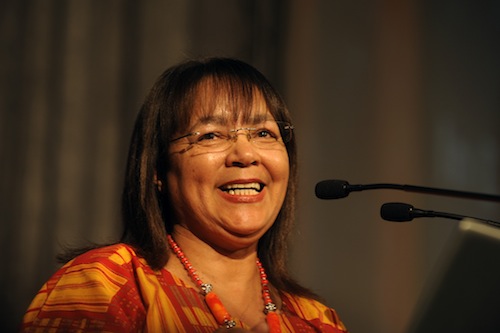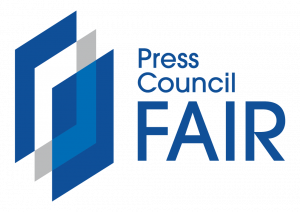
[By Patricia de Lille] SA has some of the highest cell phone costs in the world. In fact, late last year the-then deputy minister of communications, Roy Padayachie, disclosed that the department of communications had commissioned a study to benchmark SA communication costs against our “peer countries”.
The study compared SA to Brazil, Chile, Korea, India and Malaysia, and found that SA has “exceptionally high telecommunications prices relative to its peer group countries”; and that the country has the “least competitive market”.
It appears that much of the problem of high cellphone call costs, and the poor competitive market, lies in interconnection fees — being the fee one operator charges another operator to receive a call on its network.
In our fight to see cellphone call costs slashed, interconnection seems like a logical place to start. Despite provisions, in the Electronic Communications Act (ECA), which authorise the industry regulator, the Independent Communications Authority of SA (Icasa), to regulate interconnection, including pricing, it has failed to do so — apparently having been convinced by the cellphone operators that they are not authorised to regulate interconnection rates unless they first determine that there is a non-competitive market.
This process of determining the competitiveness of the market is a cumbersome one, and although Icasa has recently started this process (which it envisages completing by the middle of next year) it is very much a case of too little too late.
Had Icasa commenced with this process several years ago, when the act was first promulgated, it is almost certain that we would have had pricing regulation by now. It is in any event my view that Icasa has authority to regulate interconnection — irrespective of the competition matters — in terms of sections 38 and 41 of the ECA.
Section 38 provides authority to Icasa to regulate interconnection, including “interconnection pricing principles”, subject to section 41 of the act. Section 41 of the act authorises Icasa to regulate wholesale interconnection rates “taking into account the provisions of chapter 10”. (Chapter 10 of the ECA deals with the competition matters).
Icasa’s acceptance of the operators’ interpretation that “taking into account” requires them to first comply with chapter 10 is, with respect, inconsistent with the wording of the section. Had this been the intention of the legislature it would probably have used words like “subject to”. This view is now supported by a legal opinion obtained by ECN Telecommunications from Advocate Gilbert Marcus SC.
Accordingly, interconnection fees remain unregulated in SA and are determined by commercial agreements between the operators. The history of this fee is somewhat alarming. Prior to the launch of Cell C the interconnection fee was priced at 25c/minute. When it became clear that a third network operator was considered viable in about 1998 the interconnect fee suddenly sky-rocketed by an estimated 515% between 1998 and 2001 — when Cell C was eventually launched.
Despite Alan Knott-Craig’s version (in his column on this site) of the events back in 1998, there is much speculation, and it is difficult to argue with it, that this radical price hike was aimed at throttling Cell C’s market penetration.
Cell C has itself often complained that MTN and Vodacom increased the interconnection rate by over 500% which “essentially affected the retail price”. The mechanics of this strategy are quite simple, and in this case appear to have been very effective.
The interconnection fee makes it more costly to call a user on another network. By upping the fee the dominant players were able to make it substantially more expensive for Cell C users to make calls, since most of those calls would have been off-network calls – to MTN and Vodacom users who had a combined 100% of the user market at that stage.
This situation, allowed to continue unregulated, simply perpetuates itself — it is estimated that Cell C has only managed to penetrate about 10% of the market — with MTN and Vodacom considered to have 90% between them.
SA’s interconnection fee is apparently amongst the highest on the African continent. Where South Africans pay about R1,25/minute the Sengalese are paying 21c (rand equivalent).
Left unregulated by Icasa this will continue as the dominant players rake in huge profits from interconnection fees. New operators will be reluctant to enter such a market since the large operators will once again use high interconnection fees as a means to squeeze out their new and smaller rivals.
Obviously, it is ultimately the consumer and our economy that suffers; and millions of poor South Africans, who pay the highest rates on prepaid packages, will remain marginalised by the lack of meaningful telecoms. There is thus a strong case for intervention by Icasa and the authority must be persuaded to introduce regulations that deal effectively with these interconnection rates and so reduce these rampant costs.
Internationally the regulation of interconnection fees has led to a reduction in cellphone call costs. India has managed, through regulation of this fee, to change radically its telecoms costs, while leaving the industry largely unregulated.
Closer to home, Namibia’s Communications Commission has managed to drastically reduce its interconnection rates by up to 43% by introducing a regulatory fee structure.
Furthermore, the Namibian authority has also introduced a glide path model which will see that country’s interconnection fees decrease every six months until a capped fee of about 30c/minute is reached in January 2011.
The trend, internationally, for regulating interconnection rates is to use the “cost of an efficient operator”. The study commissioned by the Namibian Communications Commission (NCC) found that the cost of interconnection for an efficient operator is the equivalent of 25c. Given that the SA interconnection fee is R1,25 during peak times, our cellphone operators are either grossly inefficient or are guilty of obscene profiteering.
Considering the comments by Knott-Craig on the history of the interconnection rate, and how it was initially determined and agreed rather arbitrarily, I am even more convinced that SA must follow the international trend and pass regulations that will cap the interconnection fee based on the costs of an efficient operator.
Since making my complaint to the Competition Commission, and then meeting with both the Commission and Icasa, my office has been flooded with letters and e-mails of support. South Africans are truly tired of paying exorbitant cellphone bills and of being “ripped off”.
I serve on parliament’s communications portfolio committee and I have managed to convince all the political parties on the committee that there is an urgent need for a reduction in interconnection fees. As a starting point the committee has decided to hold public hearings into this issue on the 15 September — Icasa and the Competition Commission, as well as other roles players and members of the public who have themselves initiated complaints, have been invited to attend.
I would ultimately like to see Icasa regulate the cost of interconnection fees in terms of section 38 (3) and 41 of the ECA. These fees should be based on the cost of an efficient operator. Operators should be able, in terms of the regulations, to agree interconnection rates subject to the regulations. Since costs of an efficient operator should reduce over time, the interconnection rate should be reviewed frequently and be on a glide-path — downwards! — Patricia de Lille
- De Lille is leader of the Independent Democrats
- Photo courtesy of the Financial Mail

